Heavy metal drum gear: an essential guide
Everything you need to play metal beats
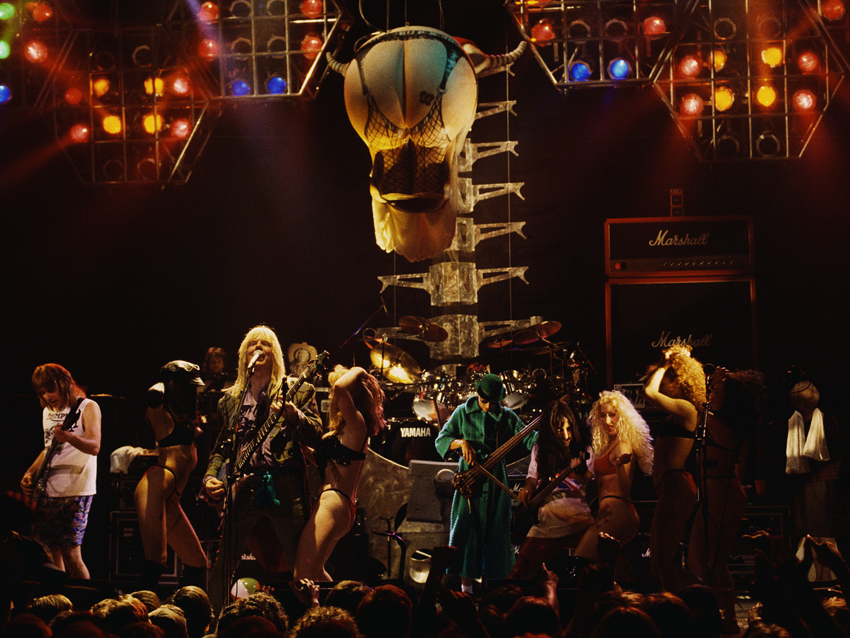
Heavy metal drum gear: an essential guide
The words ‘Heavy Metal Drum Kit’ conjure a singular vision: a double bass drum rig the size of a house, replete with a two-for-one ratio of cymbals to drums, all set against the backdrop of a six-foot gong (or 15-foot spine, as above). It might be a Spinal Tap-esque cliché, but there’s no denying that most metal drummers employ (and enjoy) this kind of behemoth - or would if they could afford it.
But as the genre develops, more variation in the type of kits used for skull-battering metal is creeping in. Which means more options for players getting started or moving up the ladder than ever before…
First up: metal drums
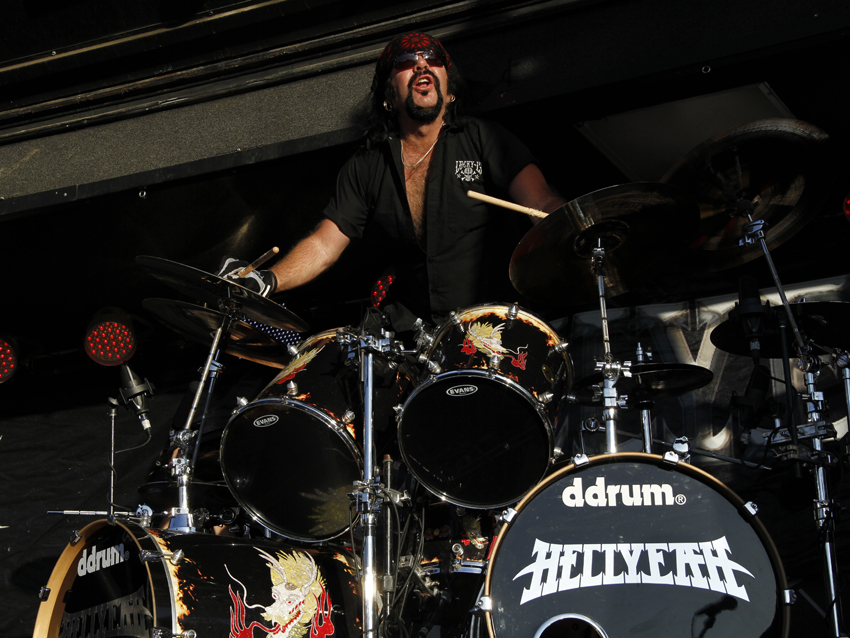
Drums
Metal drummers have been using big kits for years. Today’s finest exponents grew up listening to Iron Maiden and Judas Priest - bands powered by twin kicks and arrays of toms. The influence runs deep, which is why players like Dave Lombardo, Joey Jordison and George Kollias favour kits that boast double bass drums and toms that run from 8" or 10" through to 16" and 18" floor toms.
Eight and nine-piece kits aren’t out of the ordinary where metal is concerned. Bass and snare drum size is an area where bigger isn’t necessarily better, though. The speed of metal is such that a fast response is really important, so 22" kicks are a typical choice - Igor Cavalera even goes for 20" bass drums.
There is one notable exception: Vinnie Paul (of course) lays waste with a pair of mental 24"x24" kicks. While we’re on the subject of the Vinster, he has always gone for massively deep snares too. His current ddrum signature offering is 14"x8". But most metalheads go for fairly standard dimensions: 14" with a depth of between 5" and 6.5" suit most just fine.
Next: drum shell material
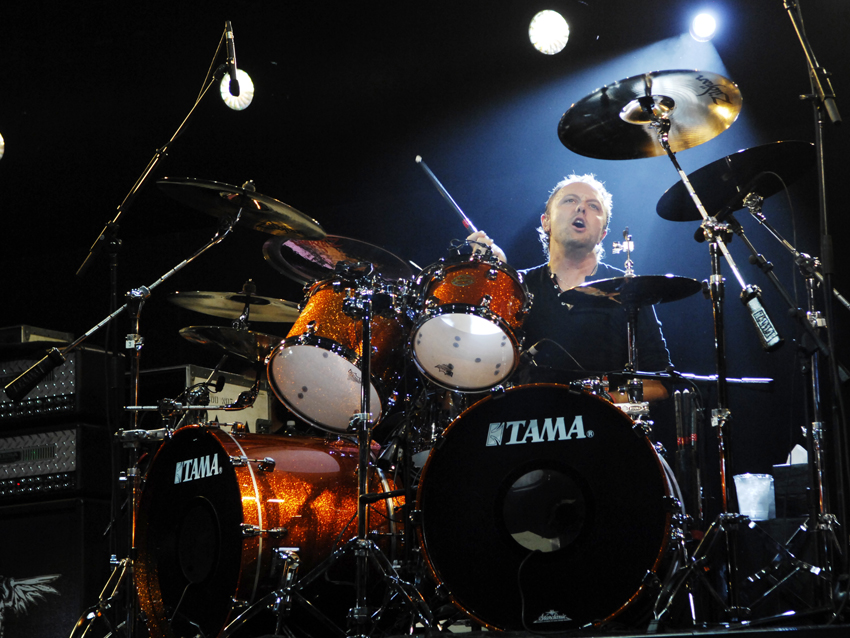
Drum shell material
Shell material for snares tends to be metal, funnily enough. Steel and brass provide the kind of uppercut needed to scythe through a wall of guitars, so maple and birch tend to be overlooked in heavier situations.
But where kicks and toms are concerned, a surprisingly wide range of materials crop up; here maple and birch are popular staples, the former with players such as Lars Ulrich, who perhaps looks for more warmth from his toms than some. Birch’s focussed tonality cuts through a mix well, so is worth consideration if you’re playing with thick, detuned guitars.
A final word on size - the advent of metalcore, with its hardcore influences, has seen players like Killswitch Engage’s Justin Foley and Moe Carlson from Protest The Hero deliver devastating beats on four and five piece kits. Very punk rock, very cool and very much more affordable…
Next: heads
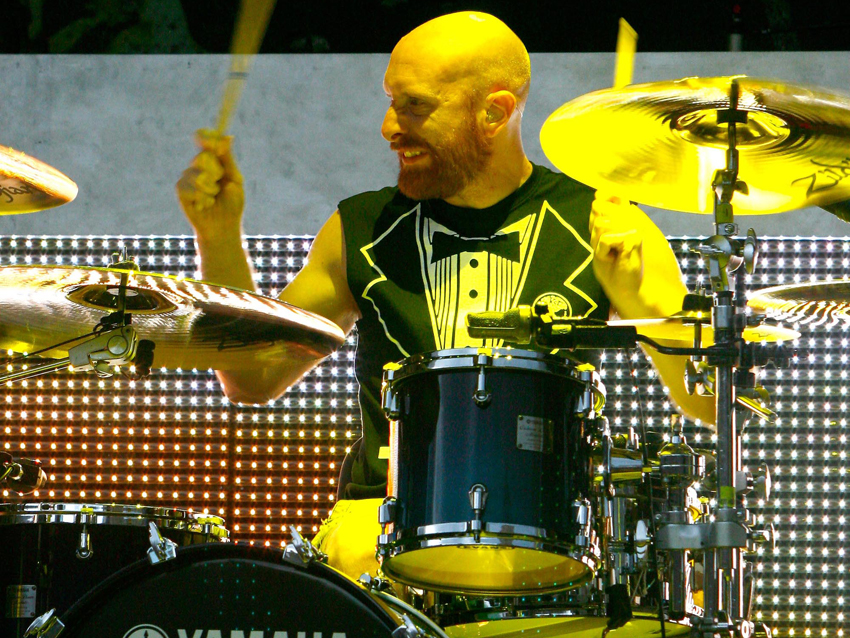
Heads
Head choice has an enormous impact on your kit’s sound. There’s no hard and fast rule as to what’s better for metal, but given how busy a typical metal mix is, you probably won’t want or need to aim for overly ringy, open-sounding drums. A response that’s defined and crisp will make its presence felt without taking up valuable sonic real estate with overtones.
You might assume that heavier styles absolutely require the thickest heads available. It’s true that substantial two-ply heads on kicks and snares are a safe bet, both tonally and in terms of longevity, but toms often benefit from heads that strike a balance between weight and lively response.
The very thickest heads take a lot of energy to get moving as quickly as metal fills need them to, so a slightly more middle-of-the-road offering is often preferable.
The choice of coated or clear tom heads is purely personal - both types crop up on big name players’ kits; clear heads promote a more articulate top end, while coated have an extra degree of dryness and focus.
Next: hardware
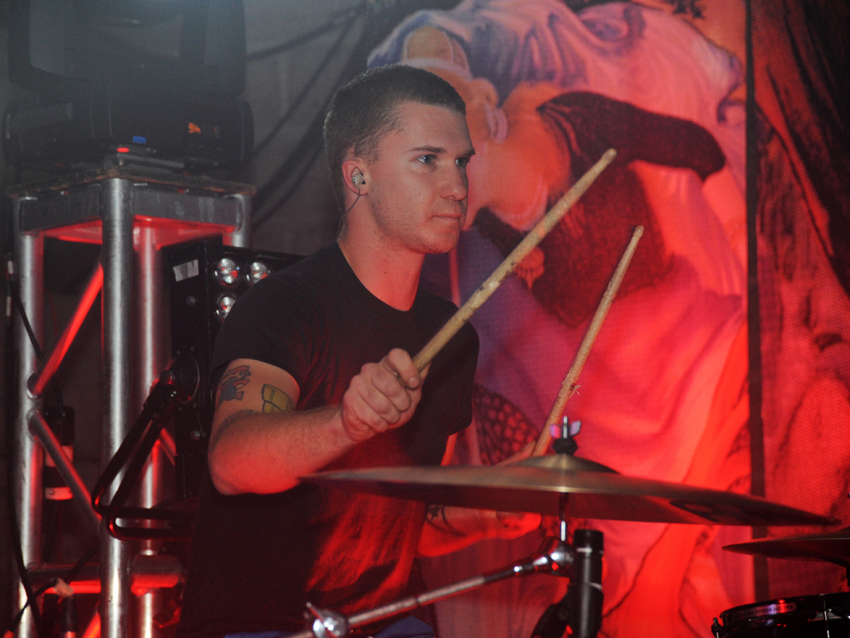
Hardware
If you’re a typical big-kit metal user, you need a big-ass rack to hang everything off. With other genres the choice of rack or stands is largely stylistic, but with large metal set-ups a rack is pretty much essential. Use stands for the multiple cymbals and toms required and you’ll probably find yourself compromising on positioning and stability.
It’s a huge challenge trying to site big double-braced stands comfortably in an expansive set-up. A good-sized rack allows for plenty of flexibility in terms of ergonomics and is easier than stands to strip down and set-up regularly.
Next: kick pedals
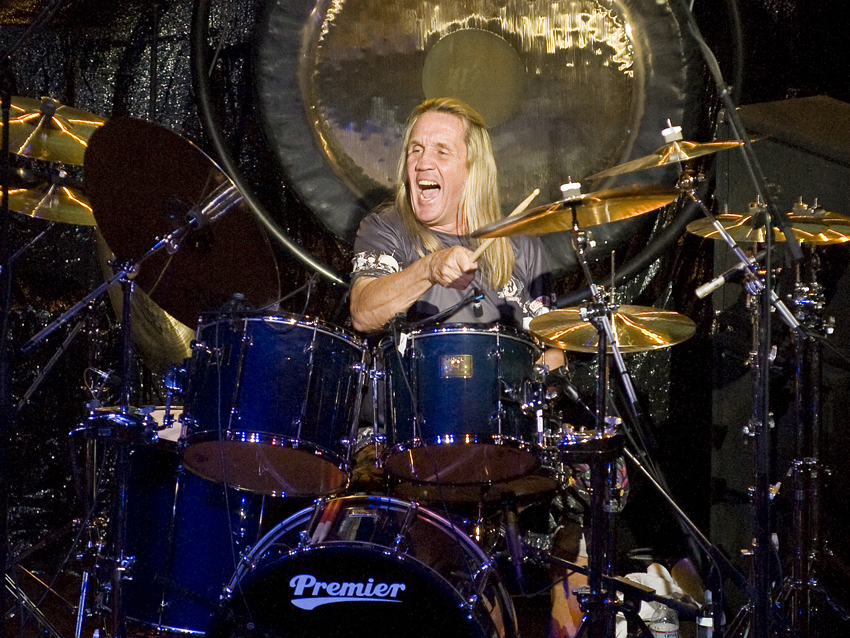
Kick pedals
Understandably, kick drum pedals are amongst the most obsessed-about hardware items for metal drummers. The interface between foot and bass drum is incredibly important and personal; if you’re gigging a lot then investing in top-end pedals will ensure longevity - skimp here and you’ll be forever fiddling to get the response you want, and breaking things far too often.
Doublechain drive is a sound bet, and the best pedals allow for an awful lot of feel customisation and tweaking now, so spending money here helps make a set-up really feel like your own.
Next: cymbals
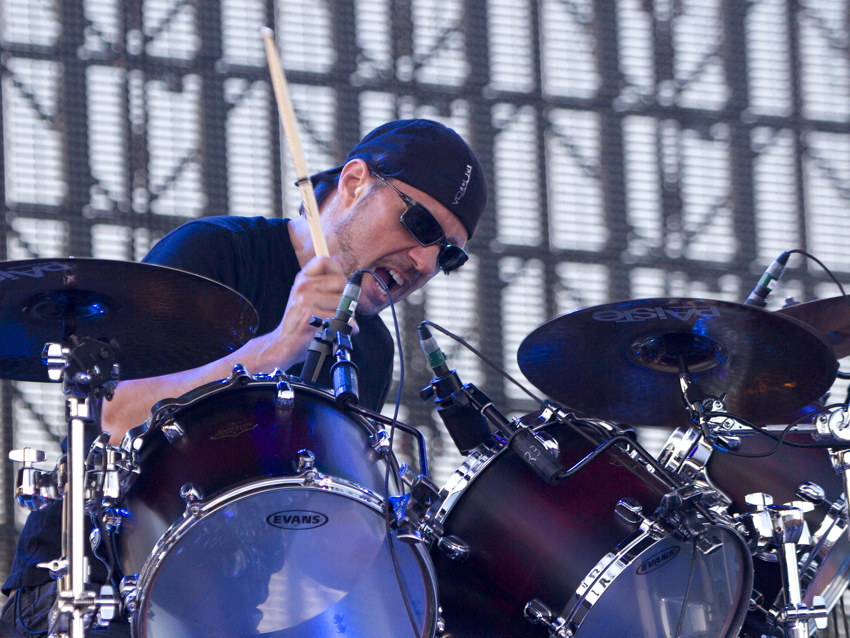
Cymbals
Predictably, the backbone of your average metaller’s cymbal array is big and heavy. That’s not to say that smaller effects cymbals don’t have their place, but the staple crashes, rides and hi-hats of metal tend not to be dinky, delicate affairs.
The reasons for this are two-fold. Firstly bigger, weightier cymbals are typically louder and brighter - qualities that most look for - and thicker cymbals also cope better with the punishment that metal players dish out. So crash cymbals will tend to be 17" or 18" in diameter and above, while rides are often 22" or bigger, with big, forceful-sounding bells for definition and volume.
Big cymbals soak up a lot of wrist energy, though, so hi-hats are sometimes lighter than you might expect. Less hefty hats also ‘speak’ quicker, so are more articulate and easier to coax tricky fast patterns out of.
Size is often a traditional 14", with only the super strong opting for the girth of a 15" set.
Effects cymbals are common in metal, with big trashy chinas popular for riding or accenting parts. But smaller splash cymbals feature in set-ups - particularly in those of players dishing out technical death metal and the like. Splashes of 8"-12" allow for quick, punchy percussive spice to be sprinkled over parts.
Next: sticks

Sticks
Again, stick choice is a very personal thing. Sure, for hard-hitting metal you’d like a stick that holds up well to punishment. But there’s no point going for durable, big diameter sticks if they don’t feel comfortable. And while the likes of Ahead’s alloy sticks are popular with some metalheads, their hi-tech feel clearly isn’t for everyone.
Unless you’ve got the hands and arms to power them, bigger sticks make playing fast more of a challenge, and tiring on a gig. So there’s a trade-off to be had between breakability and usability. If they break more than you’d like, you might have to write it off as the price you pay for the perfect feel…
Next: electronics
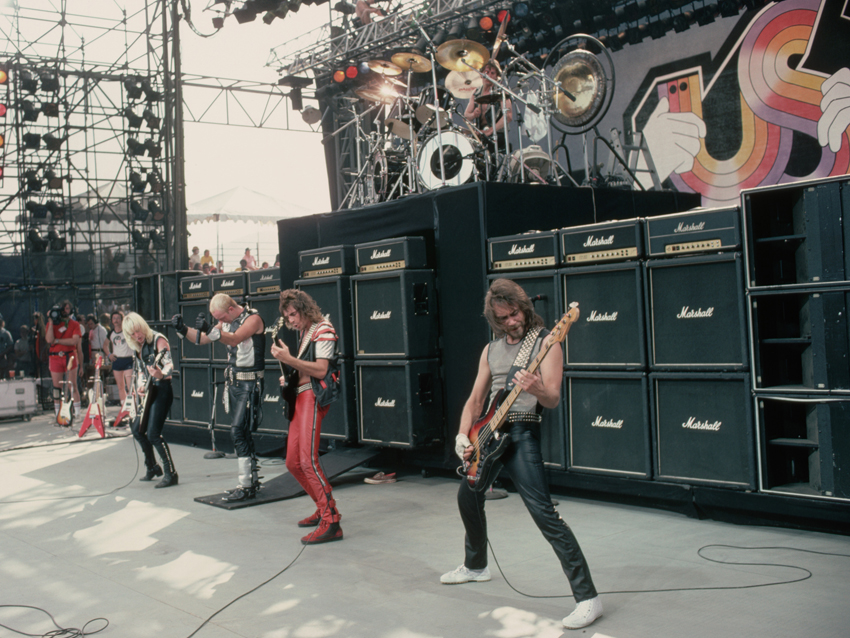
Electronics
Drum triggers are a common sight on metal kits, both in the studio and onstage. Ever wonder how the world’s best players get that incredibly consistent, in-your-face death metal kick drum sound? Or that searing snare tone? It’s more than likely a combination of acoustic response and a triggered sample or modelled sound.
Triggering allows engineers to achieve the kind of super-defined drum sounds that metal needs - no matter how good your technique there will always be an extra consistency that only electronics can deliver.
Is it cheating? Absolutely not, it’s using the right tools for the job. And you can get started without splashing out on triggers for every drum you own, or indeed the most expensive module currently available. A good starting point is to ‘electrify’ just your kick and snare, and even older modules will have usable bass and snare tones you can tweak to add some bite.
As you’re not looking for super dynamic acoustic emulations and you’ll likely layer the electronic with the acoustic, you don’t need a £5K brain to get an awesome tone.
Liked this? Now read: Slipknot's Joey Jordison's drum setup in pictures
Connect with MusicRadar: via Twitter, Facebook and YouTube
Get MusicRadar straight to your inbox: Sign up for the free weekly newsletter